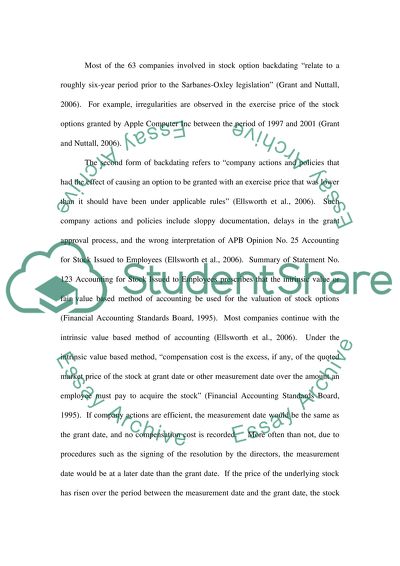Cite this document
(“Stock option backdating Essay Example | Topics and Well Written Essays - 1500 words”, n.d.)
Stock option backdating Essay Example | Topics and Well Written Essays - 1500 words. Retrieved from https://studentshare.org/miscellaneous/1523846-stock-option-backdating
Stock option backdating Essay Example | Topics and Well Written Essays - 1500 words. Retrieved from https://studentshare.org/miscellaneous/1523846-stock-option-backdating
(Stock Option Backdating Essay Example | Topics and Well Written Essays - 1500 Words)
Stock Option Backdating Essay Example | Topics and Well Written Essays - 1500 Words. https://studentshare.org/miscellaneous/1523846-stock-option-backdating.
Stock Option Backdating Essay Example | Topics and Well Written Essays - 1500 Words. https://studentshare.org/miscellaneous/1523846-stock-option-backdating.
“Stock Option Backdating Essay Example | Topics and Well Written Essays - 1500 Words”, n.d. https://studentshare.org/miscellaneous/1523846-stock-option-backdating.


